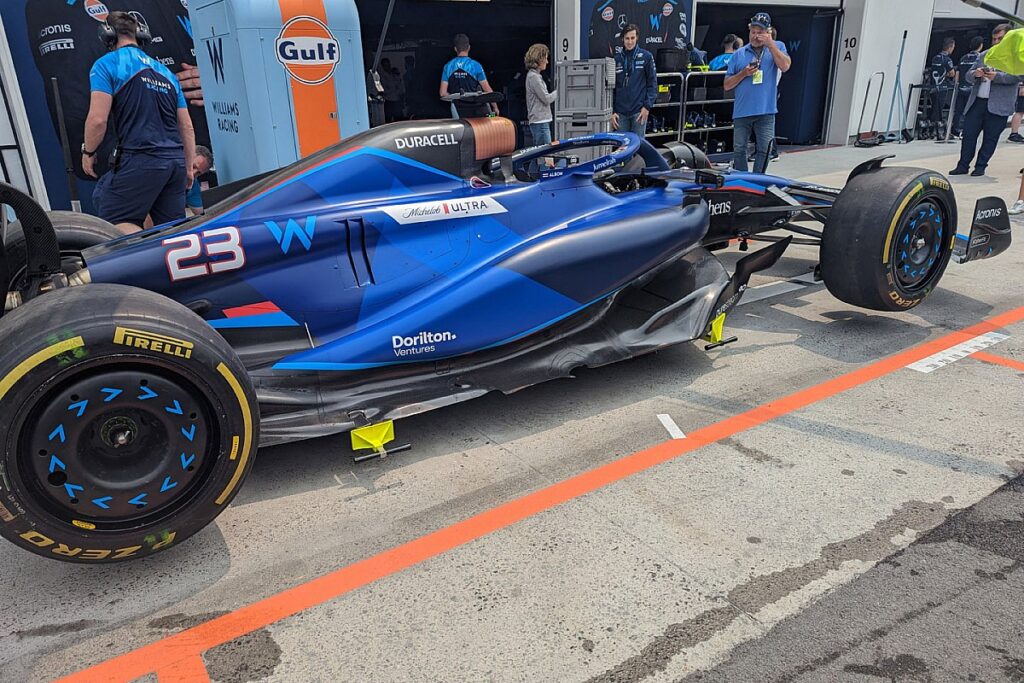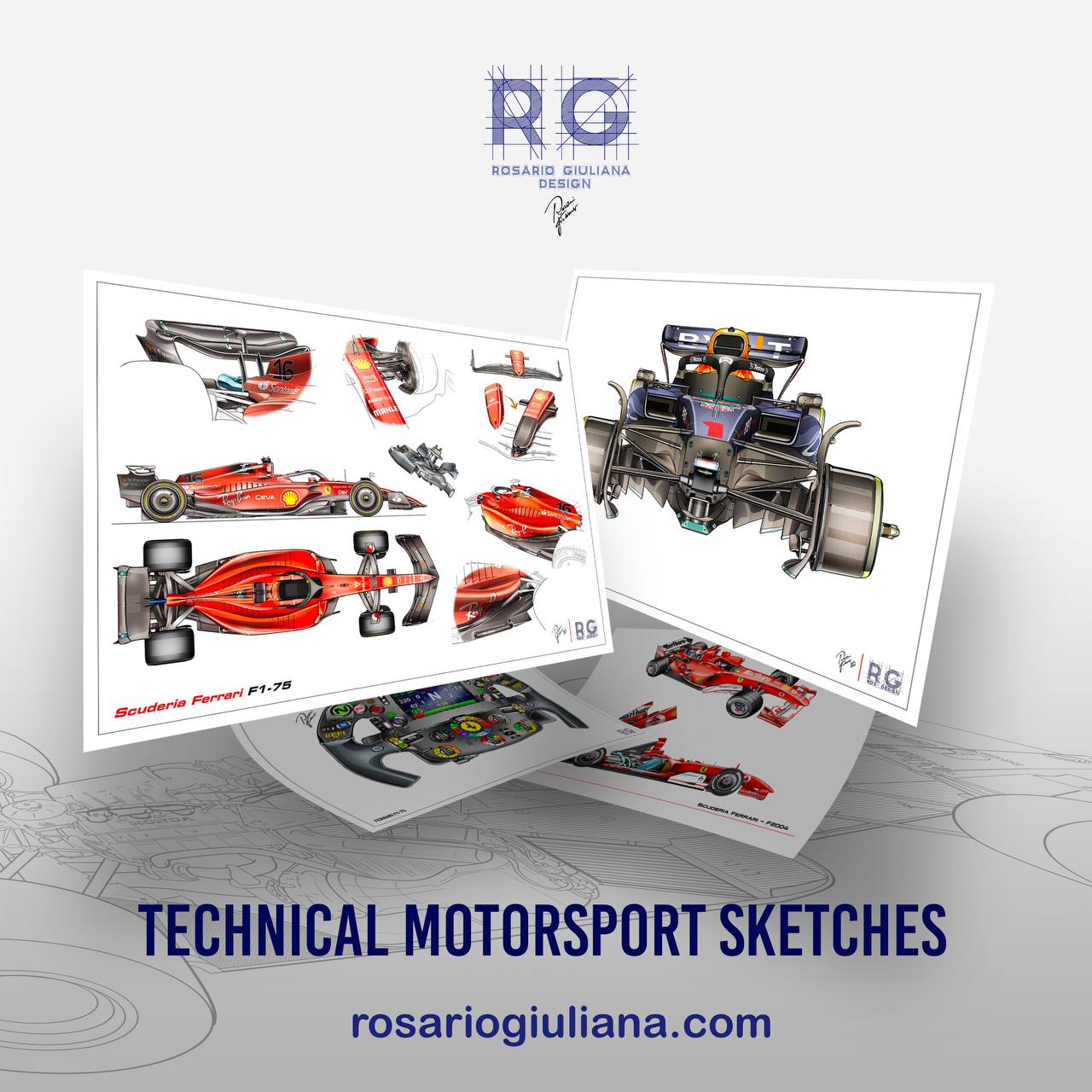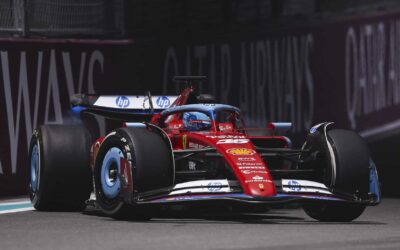In 2023, there are some teams that are structuring themselves for a better future with the hope of taking significant steps forward. McLaren and Audi, as well as Aston Martin, are certainly the most talked about teams in this sense, amidst substantial investments and leading strengthening campaigns. However, Williams has also embarked on a new path.
At the beginning of the year, James Vowles, formerly of Mercedes, arrived as team Principal and kick-started the technical changes currently taking place ahead of 2026.
Williams: Plenty of ground to make up, starting with infrastructure
However, the technical grafts will not be enough. A step forward will also be needed in terms of infrastructure, as in the case of McLaren, which is the most important current example.
The Woking squad is updating its simulator and wind tunnel in order to get closer to the standards of the top teams.
Alpine is facing the same problem, with Otmar Szafneur speaking out against the limitations teams face to make improvements – namely the inclusion of infrastructure-related investments in the budget cap.
James Vowles, the current boss at Williams, shares this perspective.
“Williams is about 20 years behind schedule in some areas. And I’m not surprised, because, in all these years, there has been a lack of investments to be able to update the structures, which are thus left out of date,” Vowles himself has admitted.
The former Mercedes strategist has spoken several times about what the first impact was for him that came from a highly technological centre like that of Brackley: another world.

However, Vowles is confident that the FIA and F1 are aware of the fact that many teams intend to compete at a high level and therefore need a change of rules.
A study is therefore underway to review the use of the budget cap and how to exempt some expenses – such as infrastructure, simulators and software – from this ceiling, so as to allow the updating of establishments which are now obsolete and which would remain a large limit for many teams.
The next few months before the summer break will be important for discussing these aspects of the ‘new’ financial regulation, something that can only be intertwined with the new Concorde Agreement.
Canada track friend, with the important new package for the FW45
Vowles had revealed that he would not have hesitated to give up on 2023 (and 2024), if this meant a better future, but the team is certainly not standing still.
Thus, after a few small adjustments on the FW45, which was already fasted than most Williams cars of the recent past, the first important updates arrived in Canada.
“I know that many see Aston Martin and the progress made, but we are no less. We’ve made a major leap forward from last year to this part, it’s just not always seen or said, but I get it. But here in Canada, we have also earned our space on the TV screens.”
In fact, the numbers confirmed that Williams has made a significant step, gaining an average of 6 km/h in medium-slow corners despite the 2023 aerodynamic limitations and almost 1 second of performance.

Alexander Albon had the task of bringing the first important package of updates to the track, revealing how it was he, together with James Vowles himself, who pushed to bring forward the debut of these innovations compared to the original programming.
“After Barcelona, Vowles and I met with various departments of the company, from engineers to assembly workers, and we pushed to anticipate the updates in Canada.
“I can’t thank them enough for the work they have done because they have succeeded, and I believe that without this effort, we would not have been able to score these points.”
The FW45 has been revisited in the belly area– one of the points most developed and modified by the teams at the start of the season – getting very close to the Aston Martin/Alpine conceptual philosophy, but above all, the floor, the nerve centre of these cars.
“We thought Canada was a friendly circuit, plus the update helped us, and everything worked out. The team can be proud of what has been done. Now we have to continue working in this direction, starting from the next round in Austria,” said Dave Robson, Head of Vehicle Performance Williams.
The FW45 has similarities with the Ferrari SF-23
The FW45 has always lacked downforce at high speeds and performance in those long-distance corners, and so, on circuits with medium-fast corners or where degradation is particularly high, performance is certainly disappointing.
In a stop-start track like the Gilles Villeneuve circuit, the important aerodynamic efficiency – with top speeds often close to those of the RB19 – and lack of degradation made the FW45 a weapon for Alex Albon to secure crucial points.
Characteristics that, at least in part, recall the Ferrari SF-23, and it is no coincidence that both had their best weekend of the season in Montreal.

In Canada, an important role was also played by the choice to give up the second pit stop and to gain track position, defending the position until the finish line, a choice that brought Ferrari and Williams together last Sunday.
“It’s not the first time I’ve done a race like this. In terms of pace, I think we were at McLaren’s level, so we made a different strategy to take track position and defend ourselves.
“We only stopped during the safety car, and from there, it was just: stay out and defend yourself. But I’m used to it, even if it’s not as fun as it might seem from the outside,” said an understandably tired Albon post-race.
The Williams standard-bearer managed to keep an infinite train of cars behind him for more than 40 laps (including Russell until he retired) with a strategy that was also very intelligent and to be praised due to the cars, the 2023 ones, plus sensitive to wake compared to those of last season.
“I drove constantly looking in the mirrors. I wanted to make sure Ocon was always in my slipstream so as to damage his tires and his aerodynamics, especially in traction.”
In view of Austria, a certain positivity remains in the Williams house, as the Spielberg circuit should still adapt well to the FW45.
“I think Austria should still be a good track for us. We have more problems in the most frequent corners, such as turn 3, turn 4, turn 9 or 10 in Barcelona, where we struggle a bit. When there are only short corners or chicanes, like in Melbourne or Canada, our car goes better. ”
It should be remembered that Austria is more varied than the Montreal circuit, as there are also long-distance corners, such as 6 and 7.
Author: Paolo D’Alessandro
Translation: Jaden Diaz-Ndisang





